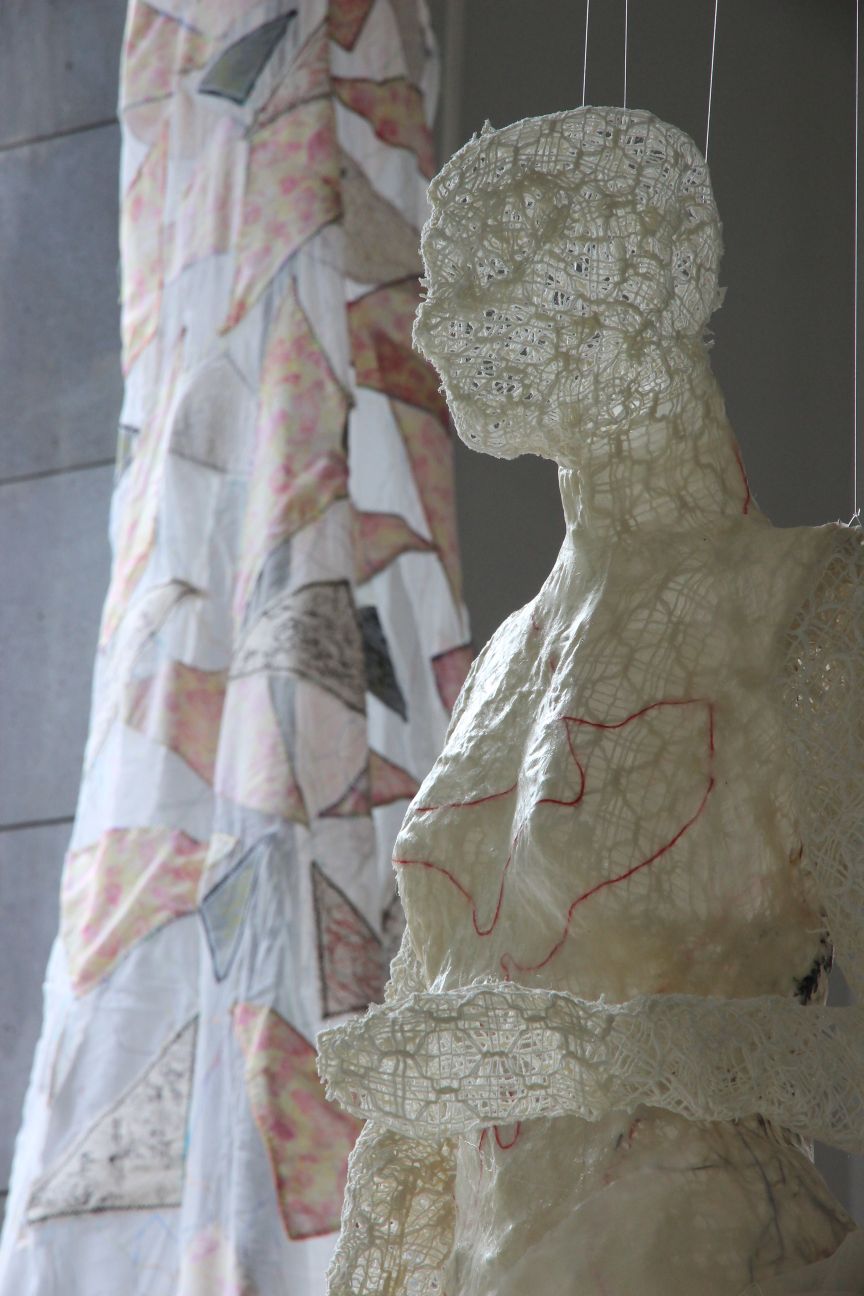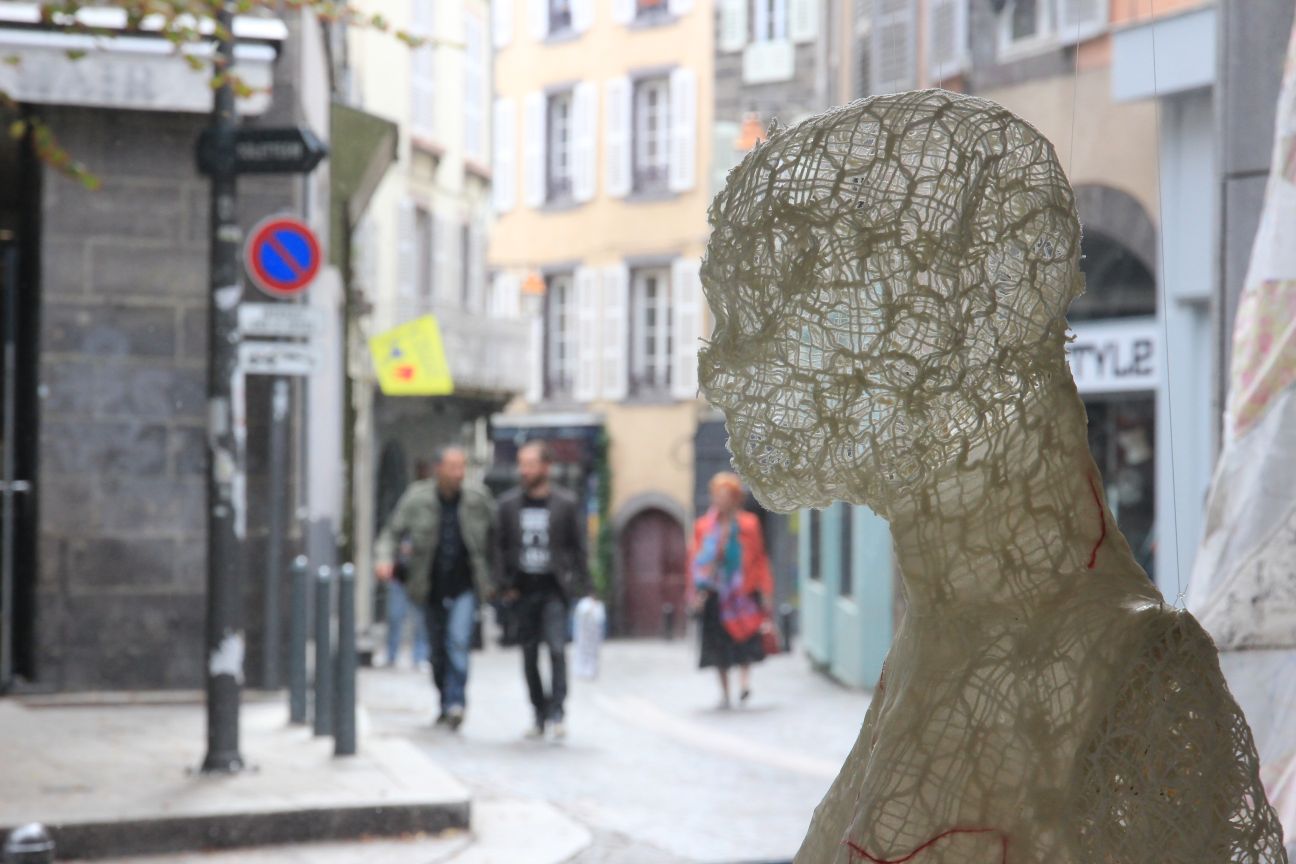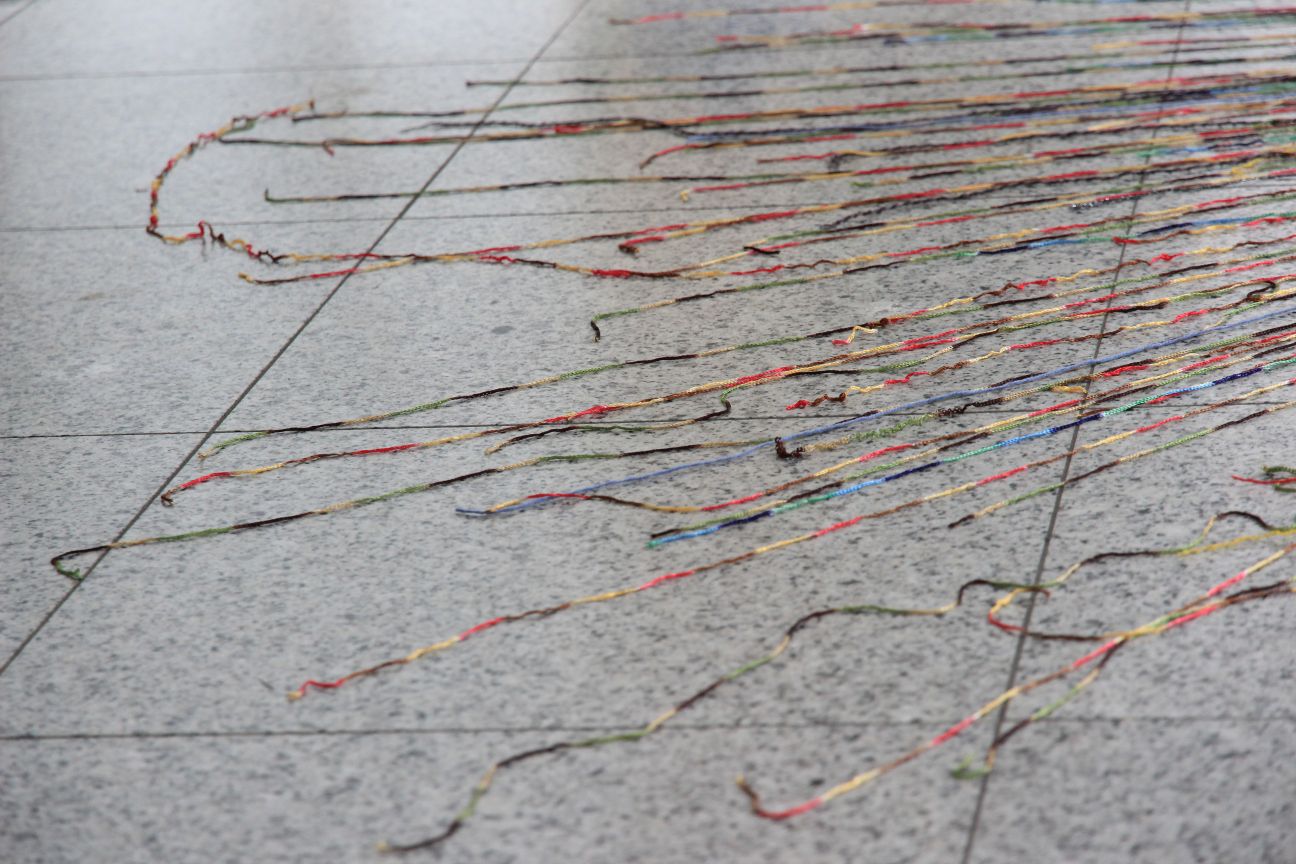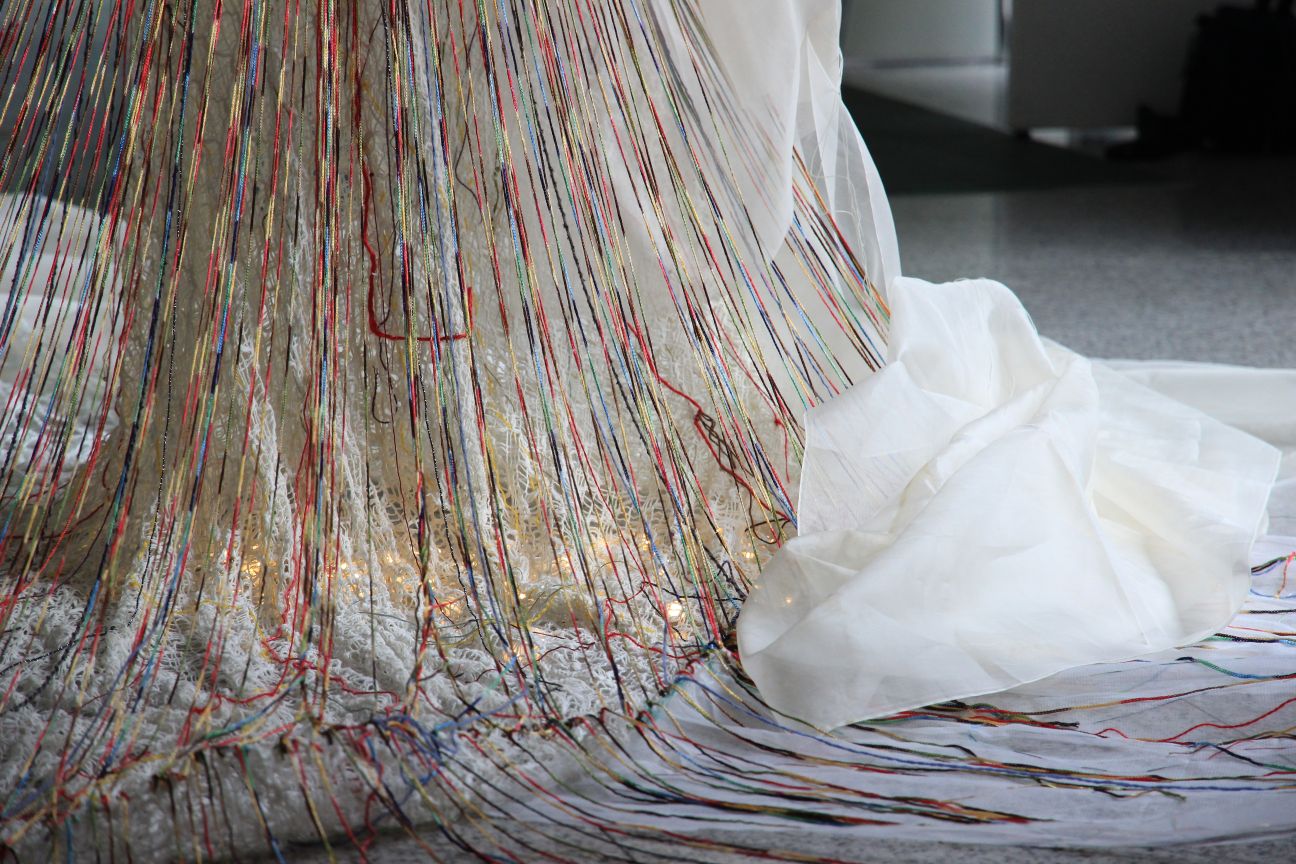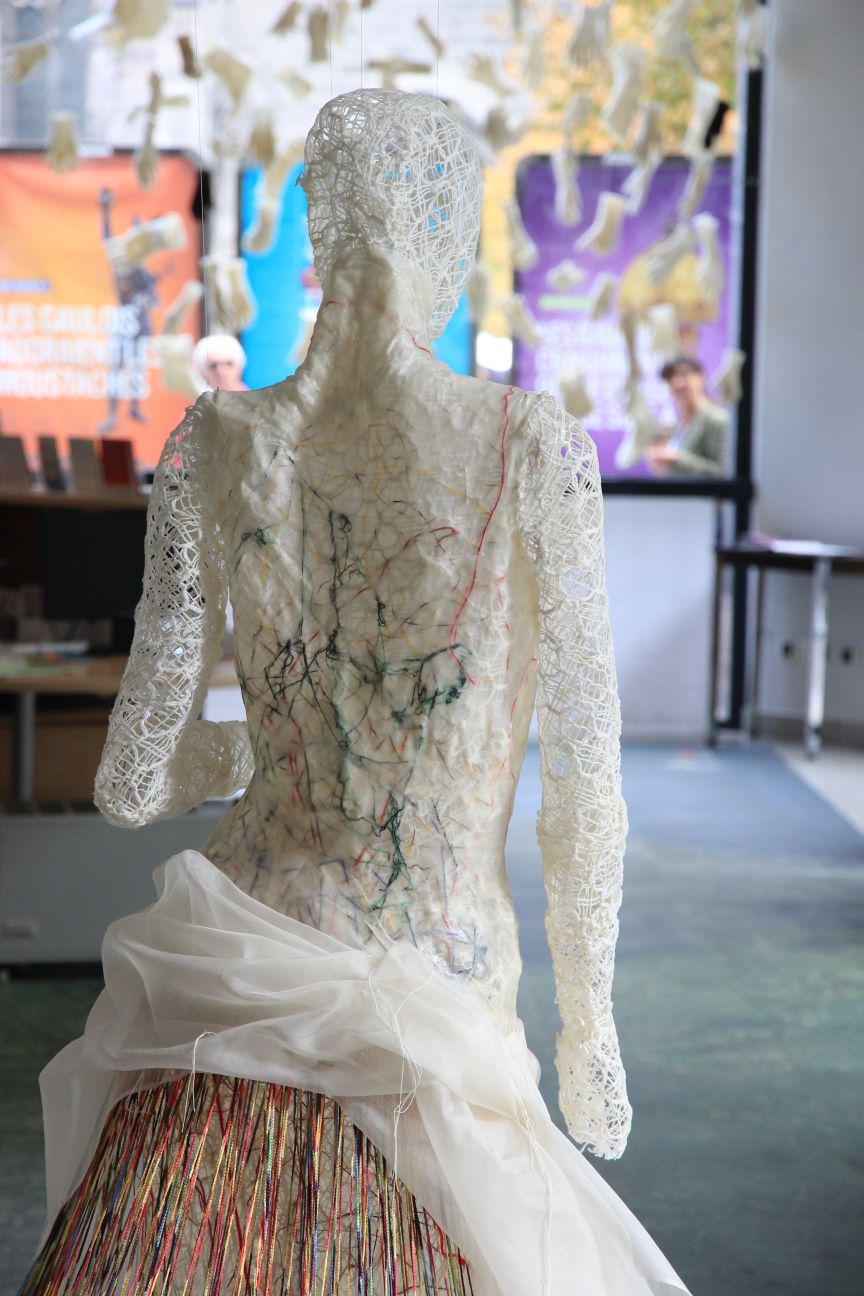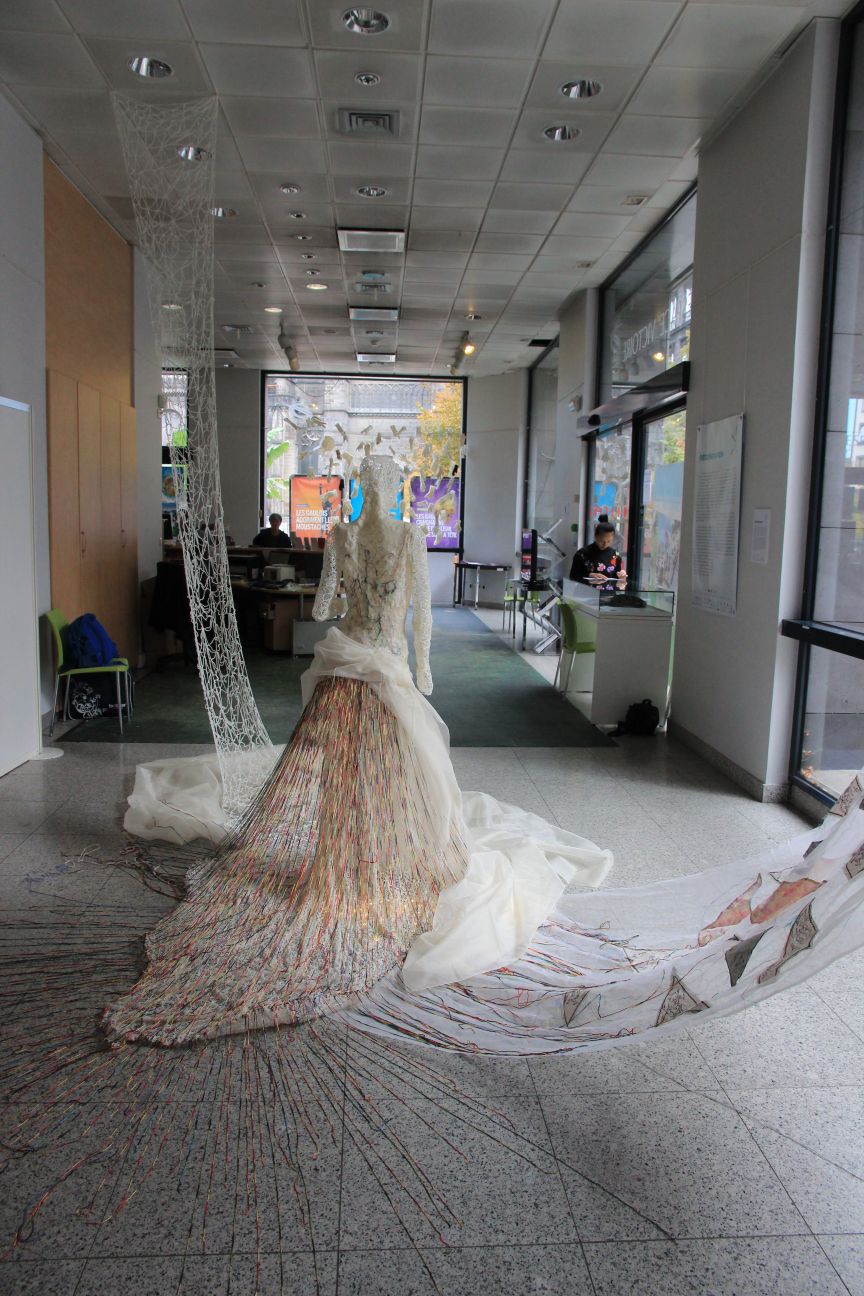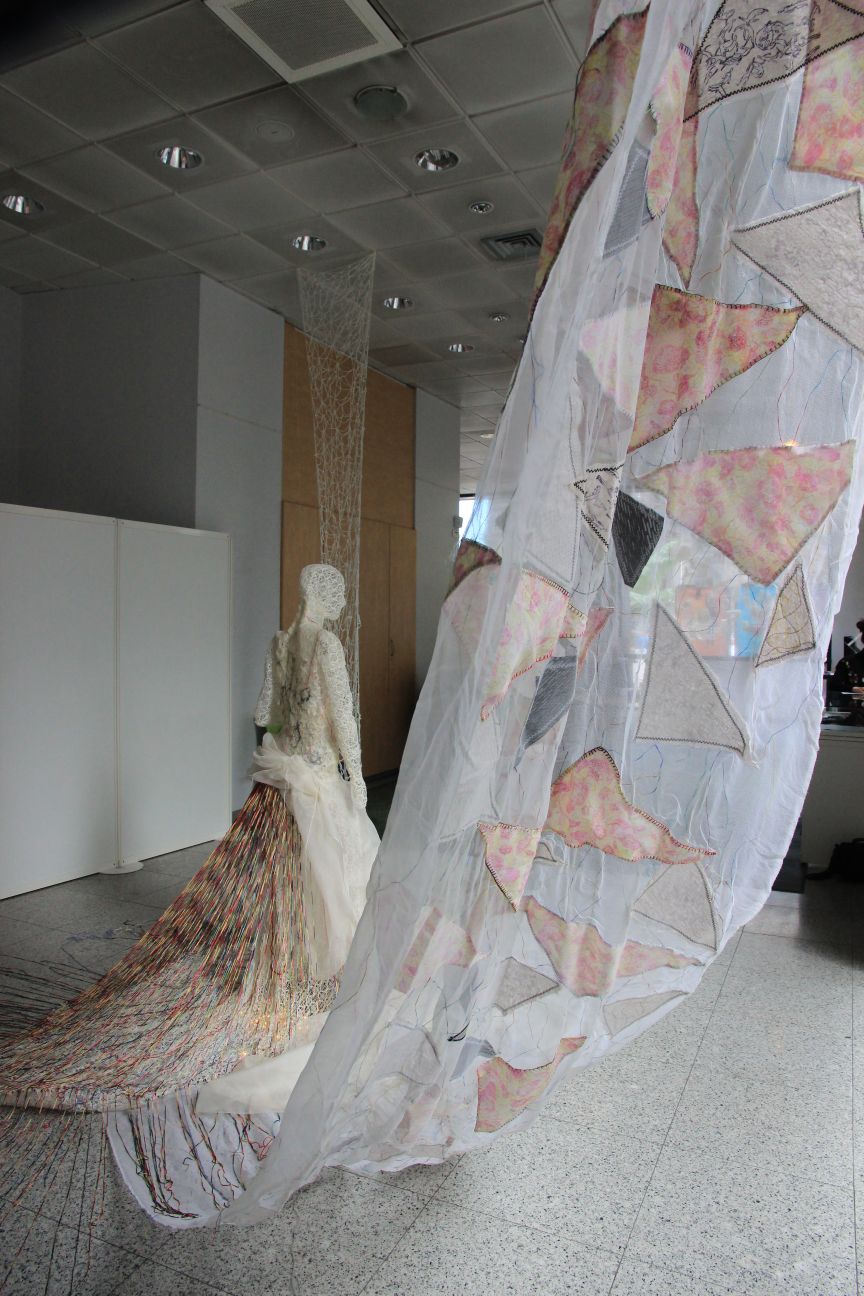Regeneration
The formation of the work for Regeneration began with the theme for this year’s Le Festival International des Textiles Extra ordinaires (FITE), renaissance. With raw silk fabric brought from Vietnam, Trâm Kha began a search for local materials and inspiration to work with in France. Found fabric, old woodcut stamps, string and yarn was collected in her meetings with various artists around Lyon, traditional artisans wielding giant textile looms, trips through second hand flea markets and an internationally renowned silk manufacturing company, Bucol.
The centerpiece of Regeneration is a figure of a woman created from a found wool blanket, Vietnamese raw silk, layers of colored thread and Amidon starch. The thin silk fabric acts as a skin, holding the figure together and allowing for a transparent view under its surface. Nerves and veins become visitble and extrude from behind the figure forming into an unsettling, yet beautiful, streaming tailcoat. Surrounding this form is an installation of fabrics, patterns pieced together that are decorated with hand made stamps depicting human figures. These quilt-like sheets, thread and yarn intersect the space inside of l’Espace Victoire forming a series of portière.
Although not distinctly apparent, there is a subtle historical linkage that can be made from the raw silk made in Vietnam and the silk that was machine printed and purchased in France. Neighboring city Lyon, the once powerhouse of the silk manufacturing industry fueled in part by the Silk Road, ultimately became the ending point for the long journey. The portière in Trâm Kha’s installation, which historically were brought to Europe in the 4th century from Asia, is also another subtle hint at this largely forgotten history.
The installation could be seen as a representation of a historical metamorphosis in textile trade and production, from hand printed woodcuts to the now ubiquitous machine inkjet printing machines, from the grueling hand and foot operated looms to the now effortless mechanical operations that control the precise speed of knitting needles. But underlying the thin fabrics is something very personal that is being hinted at. Set somewhere between the human and abstract forms, a metaphor of light and space provide insight into what we are able to see, and how our surroundings can be effected by even those things we can’t.
